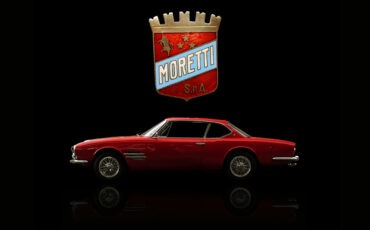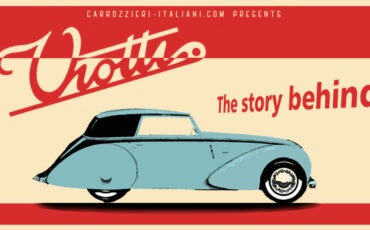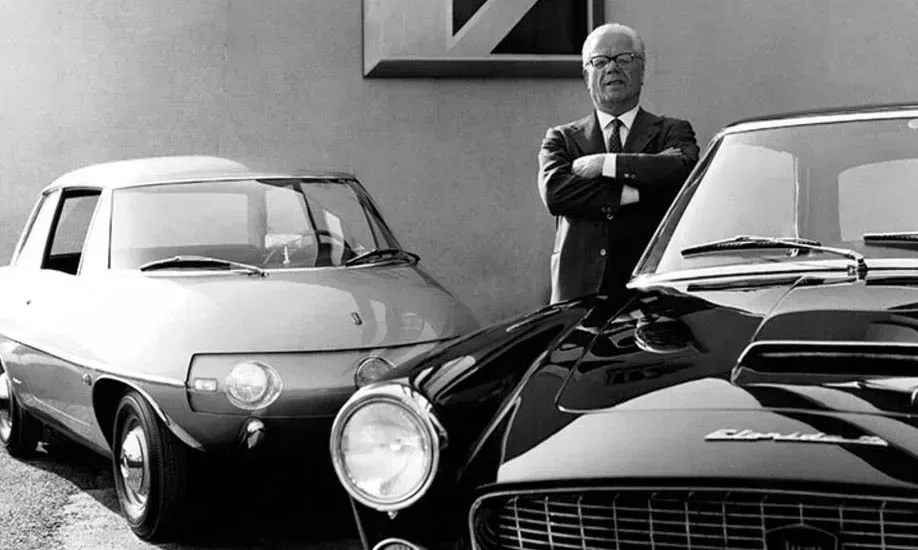
Founded by Battista “Pinin” Farina, Pininfarina has become one of Italy’s most iconic coachbuilders, renowned for its timeless designs and technical innovation in the automotive industry. From its humble beginnings in the early 20th century, Pininfarina’s journey reflects a blend of artisanal craftsmanship and industrial ambition, positioning the company as a leader in luxury automobile design. This article explores the early history of Pininfarina, from Battista’s formative years to the company’s present, highlighting key milestones and the visionary leadership that set the foundation for its global success.
The Beginning
Battista “Pinin” Farina was born on November 2, 1893, in Turin. At the age of 11, he began working at his brother Giovanni’s body shop, Stabilimenti Farina. It was here, early in his career, that he designed the distinctive front grille for the Fiat Zero, a design that caught the attention of Avvocato Giovanni Agnelli, the founder of Fiat. This recognition marked a pivotal moment in Farina’s career, paving the way for future accomplishments.
During World War I, from 1915 to 1918, Battista took on a leadership role in the production of “Aviatic” training airplanes, receiving high praise from the Military Aviation’s Technical Directorate for his meticulous execution of the work. This period showcased his ability to manage complex projects, a skill that would serve him well in the years to come.
In 1920, after the war, Farina embarked on a journey to the United States to study the rapid advancements in the automotive industry. His visit to Detroit, where he met Henry Ford, was particularly impactful. Ford offered him a position within his company, but Farina chose to return to Italy, inspired more by the spirit of private enterprise he observed in America than by the technical knowledge. This experience fueled his ambition to build something significant back home. The same year, he married Rosa Copasso, and the couple had two children: Gianna, born in 1922, and Sergio, born in 1926.
Farina’s interest in automobiles and his passion for innovation were already evident. In 1921, he won the prestigious “Aosta-Gran San Bernardo” race in a touring car, setting a record that remained unbeaten for 11 years. His understanding of both performance and design would become the foundation of his future business.

In 1930, with a strong desire to strike out on his own, Battista left Stabilimenti Farina and, on May 22, founded his own company, “Carrozzeria Pinin Farina,” in Turin. The company’s establishment was made possible through financial backing from his wife’s wealthy aunt, a widow, and his great friend Vincenzo Lancia, another legend in the automotive world. Farina’s vision was clear: to create a coachbuilding company that combined artisanal craftsmanship with industrial efficiency. Initially employing 150 workers at a 9,250-square-meter facility on Corso Trapani, the company specialized in crafting custom bodies for individual clients and small production series, aiming to produce 7-8 vehicles per day.
In the early years, Pinin Farina frequently collaborated with the renowned designer Mario Revelli di Beaumont, a partnership that led to some of the most innovative designs of the time. At the 1930 Paris Motor Show, the company presented a stunning collection of models from brands such as Lancia, Alfa Romeo, Isotta-Fraschini and Fiat. The first non italian chassis bodied by Pinin Farina was the Cadillac V16. Other notable models from this period included the Lancia Dilambda (1931), the Fiat 518 Ardita (1932), and the Alfa Romeo 6C Pescara Coupé (1935).
In 1936, Pinin Farina introduced the Lancia Astura Cabriolet Bocca, a limited-series luxury cabriolet that quickly became a symbol of elegance and quality. A year later, the company unveiled the Lancia Aprilia Aerodinamica, a groundbreaking racing car with an aerodynamic design that achieved an exceptionally low drag coefficient of 0.40, showcasing Farina’s technical innovation and forward-thinking approach.

By 1939, “Carrozzeria Pinin Farina” had expanded its operations significantly, producing 800 cars, an impressive twentyfold increase from its early days. The company’s pre-war success was underscored by collaborations with top manufacturers such as Alfa Romeo, Fiat, Lancia, and Renault. However, the outbreak of World War II temporarily disrupted the company’s growth, halting its international partnerships and large-scale production.
The Afterwar
After the end of World War II, Pininfarina quickly resumed operations with the production of the Lancia Aprilia Bilux, marking the company’s return to the automotive scene. In 1946, despite Italy’s exclusion from the Paris Motor Show, Battista Pininfarina and his son Sergio made a bold move by driving two newly designed models, the Alfa Romeo 6C 2500 and the Lancia Aprilia Cabriolet, from Turin to Paris. They parked the cars at the entrance of the Grand Palais, drawing immediate attention from both the public and the press. A French journalist noted, “Ce diable de Farina a ouvert son antisalon personnel,” underscoring Pininfarina’s audacious success.
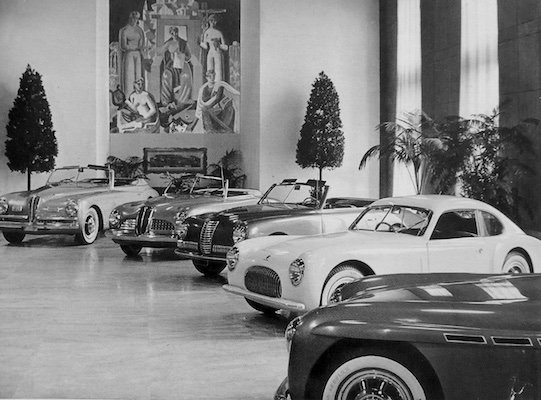
1947 was a milestone year for Pininfarina, marked by the debut of the Cisitalia 202 at the Mostra della Carrozzeria Italiana. Described as a “sculpture in motion,” the Cisitalia 202 became the first car to be included in the permanent collection of the Museum of Modern Art (MoMA) in New York. The car’s innovative design introduced the “Ponton” style, which would influence the formal approach to post-war car design. That same year, Pininfarina also began its collaboration with Maserati, designing the first Maserati production car, the A6 1500 Coupé. This model boasted advanced technical features such as a tubular chassis and a lightweight aluminum six-cylinder engine, all packaged in a design that was as aerodynamic as it was elegant.
Pininfarina’s reputation expanded globally in 1951 with the introduction of the Nash Ambassador and Nash Healey, specifically designed for the U.S. market. The Nash Healey even appeared in the Hollywood film Sabrina, starring Audrey Hepburn, William Holden, and Humphrey Bogart, signaling Pininfarina’s rising influence in both the automotive and cultural spheres.
In 1952, Pininfarina forged what would become one of the most significant partnerships in automotive history: its collaboration with Ferrari. This partnership, which has continued to be crucial for both brands, began with Pininfarina’s designs for Ferrari’s early models, shaping the iconic image of Ferrari cars. That year, Battista Pininfarina also received widespread recognition in the United States for his work on the Nash Ambassador and Nash Healey.
The early 1950s also brought significant recognition to Pininfarina’s craftsmanship. In 1953, Battista Pininfarina was awarded the title of Cavaliere del Lavoro by the President of Italy, Luigi Einaudi, in recognition of his contributions to the Italian automotive industry. By 1954, Pininfarina had introduced two landmark models: the Maserati A6 GCS Berlinetta and the Lancia Aurelia B24. The Maserati A6 GCS Berlinetta continued Pininfarina’s tradition of blending advanced aerodynamics with refined design, while the Lancia Aurelia B24, presented at the Brussels Motor Show, became an international success, with many of the 761 units produced being exported to the United States.
In 1955, Pininfarina’s Alfa Romeo Giulietta Spider marked a pivotal moment for the company. Designed initially for the American market, it achieved global acclaim with over 27,000 units produced, symbolizing Pininfarina’s shift toward large-scale industrial production while maintaining its signature design excellence. The Giulietta Spider was succeeded by the Alfa Romeo Duetto, which continued the tradition of elegance and sportiness. This period also marked the beginning of Pininfarina’s collaboration with Peugeot, further diversifying its portfolio.
With production rapidly increasing, Pininfarina began constructing a new industrial plant in Grugliasco in 1956, which was completed two years later. This expansion allowed the company to meet growing demand while maintaining the high standards of craftsmanship that had become its hallmark.

In 1957, Pininfarina introduced the Lancia Florida II at the Turin Motor Show, a model that influenced global automotive design for years. Battista Pininfarina himself was particularly fond of this car, often stating, “I live in my Florida,” reflecting his personal connection to the design. The Florida II was a milestone in luxury sedan design, combining elegance with innovative engineering.
By 1959, Pininfarina had solidified its partnership with Ferrari through the creation of the Ferrari 250 GT Short Wheelbase (SWB), introduced at the Paris Motor Show. This model, produced in 200 units over the following two years, became a defining example of the Ferrari-Pininfarina collaboration, perfectly balancing sportiness with timeless elegance. The Ferrari 250 GT SWB remains one of the most celebrated models in automotive history, embodying the design philosophy that made Pininfarina a global leader in the industry.
Anni 60 - 80
In 1960, Pininfarina unveiled the Pininfarina X, a groundbreaking design that harmoniously combined scientific research with innovative aesthetics inspired by the Space Age. This vehicle featured a diamond-shaped wheel arrangement and exceptional aerodynamic characteristics, enabling it to achieve higher speeds and lower fuel consumption with the same power. The same year also saw the introduction of the Fiat Abarth Monoposto da record, which captivated audiences with its pure speed, securing eight international records and one world record.
The following year, in 1961, Battista Pininfarina passed leadership of the company to his son, Sergio, and his son-in-law, Renzo Carli, at the age of 68. This transition marked a significant milestone, as the President of Italy authorized the family name change from Farina to Pininfarina, solidifying their legacy in the automotive industry.
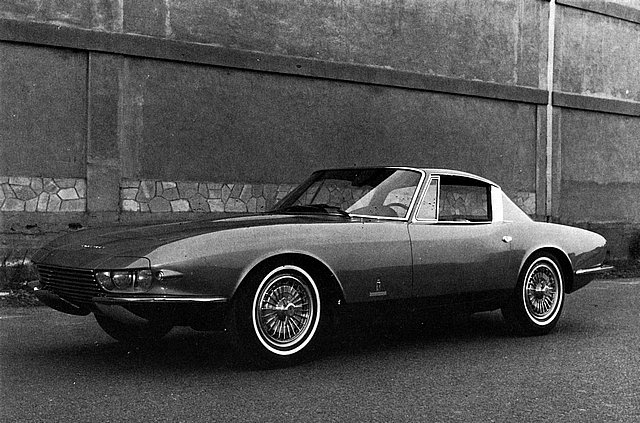
In 1963, the Chevrolet Corvette Rondine made its debut at the Paris Motor Show, showcasing a European flair for an American model while anticipating the stylistic lines of the Fiat 124 Sport Spider.
The year 1966 was pivotal with the passing of Battista Pininfarina on April 3 in Lausanne, leading to Sergio Pininfarina assuming the presidency of the company. That same year saw the inauguration of the Centro Studi e Ricerche in Grugliasco. The Geneva Motor Show featured the debut of the Alfa Romeo 1600 Spider, later known as the “Duetto,” alongside the Fiat 124 Sport Spider, which rapidly became one of Pininfarina’s major successes, particularly in the Americas.
In 1967, Pininfarina established the Centro di Calcolo e Disegno, enhancing its innovative capabilities. The Dino 206 Competizione was presented at the Frankfurt Motor Show, showcasing advanced aesthetic research for a prototype with a distinctly racing character, paving the way for design principles in future mid-engine Ferrari models.
By 1968, Pininfarina continued to make significant contributions to automotive design with the unveiling of the Ferrari P6 at the Turin Motor Show, a prototype that hinted at features to be developed in later models like the Ferrari BB and 308 GTB. The BLMC 1100 was also introduced, representing a mature aerodynamic sedan concept that would gain immense popularity in the following decade.
In 1969, the Peugeot 504 Cabriolet debuted in Paris alongside the Peugeot 504 Coupé, which had previously been crowned “Car of the Year” in 1968 and recognized as the “Queen of Africa” for its exceptional performance in African rallies. Additionally, the Sigma Grand Prix was introduced in Geneva, addressing critical safety aspects for Formula 1 cars aimed at drastically reducing risks in the sport.
In 1970, Pininfarina showcased the Ferrari Modulo at the Geneva Motor Show, a design by Paolo Martin that garnered twenty-two international design awards for its pure geometric form, prompting observers to question whether it was still a car or a spaceship from 2001: A Space Odyssey.

The Ferrari Berlinetta Boxer was introduced at the Turin Auto Show in 1971, hailed by Sergio Pininfarina as a landmark prototype that marked Enzo Ferrari’s shift towards the mid-engine design. This model featured a low, sleek profile, with a design that visually separated the body into two overlapping panels.
In 1972, Pininfarina inaugurated the Galleria del Vento, the first wind tunnel in Italy and one of the few in the world at the time, highlighting the company’s commitment to research and development in automotive aerodynamics.
Three years later, in 1975, the Fiat 130 Opera was presented at the Geneva Motor Show, showcasing elegance and lightweight lines reminiscent of a grand coupe. The following year, Sergio Pininfarina received the prestigious title of Cavaliere del Lavoro, echoing the recognition his father had garnered nearly two decades earlier.
In 1978, Pininfarina anticipated environmental concerns with the introduction of the Ecos, an eco-friendly urban electric vehicle prototype, at the Turin Motor Show. The Jaguar XJ Spider also made its debut at the Birmingham Motor Show, featuring a design that exemplified organic lines in true British sports car tradition.
By 1979, the evolution of Pininfarina’s activities led to the establishment of an industrial group under the holding company Pininfarina SpA, which coordinated the financial and branding efforts of its subsidiaries. During this time, the Lancia Beta Montecarlo Turbo was released, going on to win the World Endurance Championship in 1980 and 1981. Additionally, the CNR Studio, born from theoretical and experimental research initiated by the Italian National Research Council, received the Compasso d’Oro award for its ideal aerodynamic design.
1980 - 2000
In 1980, Pininfarina celebrated its 50th anniversary at the Turin Motor Show with the introduction of the Ferrari Pinin prototype, a testament to the company’s enduring legacy in automotive design. Throughout the decade, Pininfarina continued to showcase remarkable vehicles at international auto shows, including the Audi Quartz, Honda HP-X, Peugeot Griffe, and Alfa Romeo Vivace Coupé and Spider, while also providing design consultancy for manufacturers such as Peugeot, Ferrari, and Lancia. The production of iconic models like the Ferrari Testarossa, Alfa Romeo Spider, Lancia Thema Station Wagon, and Peugeot 205 Cabriolet marked this period of significant output and innovation.
In 1982, the Centro Studi e Ricerche evolved into Pininfarina Studi e Ricerche SpA, gaining operational independence and establishing a presence in Cambiano. The following year, the Spidereuropa Volumex was presented at the Turin Motor Show, representing the final iteration of the Fiat 124 Sport Spider, which had seen over 200,000 units produced since its introduction in 1966. The Peugeot 205 also made its debut at the Geneva Motor Show, marking a pivotal moment in the company’s design trajectory.

The Ferrari Testarossa was launched in 1984 at the Paris Motor Show, further solidifying Pininfarina’s reputation for creating stunning sports cars. By 1986, the Pininfarina Group went public, and Pininfarina Extra Srl was established to focus on product design. That year also saw the inauguration of a new production facility in San Giorgio Canavese and the introduction of the Cadillac Allanté, which exemplified simplicity and proportional harmony while respecting Cadillac’s brand identity.
The Frankfurt Motor Show in 1987 featured the debut of the Ferrari F40, designed to commemorate Ferrari’s 40th anniversary, alongside the presentation of the Alfa Romeo 164, which played a crucial role in revitalizing the Arese brand in international markets. The ETR X 500, a high-speed train designed by Pininfarina, was also unveiled, showcasing the company’s versatility in design beyond automobiles.
In 1989, the Ferrari Mythos prototype, designed by Pietro Camardella, was showcased at the Tokyo Motor Show. This sculptural model won the “Car Design Award 1990” for its perfect balance of aesthetic emotion and technical rationality, embodying Pininfarina’s commitment to beauty.
The 1990s began with the CNR E2, the first of a series of prototypes addressing energy and environmental issues, followed by several innovative designs throughout the decade, including the Honda Argento Vivo and the Eta Beta. In 1991, Pininfarina Deutschland GmbH was established to cater to the German market for automotive design and modeling.
The collaboration with various manufacturers flourished in 1992, leading to the creation of notable models such as the Ferrari F355 Berlinetta, Ferrari F50, and Alfa Romeo Spider and GTV. The following year, the production line was further renewed with the introduction of the Ferrari 456 GT designed by Camardella (read our story here), Peugeot 306 Cabriolet, and Bentley Azure, coinciding with the passing of Renzo Carli, a significant figure in the company’s history.
By 1995, Pininfarina showcased its commitment to the future of automobiles at the “Beauté Mobile: un siècle de chef-d’oeuvres automobiles” exhibition in Montreal, featuring the Ethos research initiative, which attracted half a million visitors. The Peugeot 406 Coupé was introduced in 1996, receiving accolades such as “Most Beautiful Coupe in the World 1997” and further solidifying Pininfarina’s standing in automotive design.
In 1997, the Peugeot Nautilus was revealed, an artistic interpretation of high-class sports sedans. This year also marked the beginning of a collaboration with Mitsubishi Motors Corporation for the Mitsubishi Pajero Pinin 3-door model, produced in Pininfarina’s new Bairo facility. The Alfa Romeo Dardo was introduced at the Turin Motor Show in 1998, recognized as “Car of the Year” and celebrated for its emotional impact and embodiment of Italian automotive excellence.
The year 1999 saw the birth of the Metrocubo concept car, an eco-friendly urban hybrid vehicle developed with nine technical partners, including Michelin. The Fiat Wish was also introduced, showcasing Pininfarina’s innovative approach to convertible design, transforming from cabriolet to coupe in mere seconds. The Ferrari 360 Modena was presented at the Geneva Motor Show, exemplifying the fusion of technical advancement, functionality, and aerodynamic efficiency, encapsulating the spirit of the iconic prancing horse.
2000s
In the year 2000, Pininfarina marked a significant milestone in its illustrious history by debuting the Ferrari Rossa at the Turin Motor Show. This innovative prototype not only captured the attention of automotive enthusiasts but also won the Concept Car of the Year Award, reinforcing Pininfarina’s reputation for excellence in design. Shortly thereafter, the Ferrari 550 Barchetta made its global debut at the Mondial de l’Automobile in Paris. This unique vehicle stood out for its striking aesthetics and was notable for being the first Ferrari to carry the designer’s name, highlighting Pininfarina’s integral role in shaping Ferrari’s identity.
The following year, 2001, saw structural changes within the company. Pininfarina Extra Srl transitioned from a 20% shareholding to a fully controlled subsidiary, enhancing its operational capabilities. During this period, the company unveiled the Hyundai Matrix, a two-volume sedan that exemplified Pininfarina’s design expertise. Additionally, two notable concepts emerged: the Citroën Osée, which garnered “Best in Show” at the Geneva Motor Show, and the Ford Start, showcasing Pininfarina’s collaborative spirit with major automotive manufacturers.
As Pininfarina continued to expand in 2002, it rebranded its engineering division as Pininfarina Ricerca e Sviluppo SpA. The formation of a joint venture with Webasto led to the establishment of Open Air Systems GmbH, which focused on designing and producing retractable roof systems. This year also witnessed the debut of the Ferrari 575 M Maranello, a car that epitomized technical achievement and exquisite design. Moreover, Pininfarina’s partnership with Ford deepened with the launch of the Ford Streetka, highlighting the brand’s engineering capabilities.

In 2003, Pininfarina expanded its engineering portfolio through the acquisition of the experimental and prototyping activities of Matra Automobile. A joint venture with Volvo culminated in the establishment of Pininfarina Sverige AB, dedicated to developing the Volvo C70 convertibles. The year was marked by the introduction of two iconic models: the Maserati Quattroporte and the Ferrari 612 Scaglietti, both designed with Pininfarina’s renowned aesthetic sensibilities. At the Geneva Auto Show, the unveiling of the Enjoy concept, a small roadster, showcased versatility and earned accolades for its innovative design.
2004 was pivotal for Pininfarina as it merged Industrie Pininfarina SpA and Pininfarina Ricerca e Sviluppo SpA into a single entity, creating a more streamlined organization. The Detroit Motor Show served as the stage for the unveiling of two concept cars for General Motors: the Saturn Curve and Chevy Nomad. Additionally, Pininfarina designed the Countdown Clock for the 2006 Winter Olympics, along with the Olympic Torch, reinforcing its commitment to excellence in design. The debut of the Ferrari F430 showcased the continuous evolution of Ferrari’s design philosophy, further cementing Pininfarina’s status as a leader in the automotive sector.
In 2005, Pininfarina celebrated 75 years of innovation by unveiling the Birdcage 75th at the Geneva Motor Show. Developed in collaboration with Maserati and Motorola, this prototype won the “Best Concept” award, underscoring the company’s design prowess. The year also saw the introduction of the Ferrari Superamerica, a stunning example of automotive artistry, along with the launch of the Ferrari 430 Spider, reinforcing Pininfarina’s status as a leading design house.
By 2006, Pininfarina’s reputation for excellence was recognized with the Louis Vuitton Classic Concept Award for the Maserati Birdcage 75th. The company showcased the Ferrari 599 GTB Fiorano, the Alfa Romeo Spider, and the Mitsubishi Colt CZC, all crafted with Pininfarina’s signature touch. This year marked a significant leadership change with the appointment of Andrea Pininfarina as President, ensuring the continuation of the family legacy. Tragically, in August 2008, Andrea lost his life in a road accident, leaving a profound impact on the company and its vision for the future.
Following Andrea’s untimely passing, the company continued to evolve. In the subsequent years, Pininfarina launched a series of notable projects, including the Ferrari 458 Italia, presented at the Frankfurt Motor Show in 2009. The unveiling of the 2uettottanta, a spider concept based on Alfa Romeo, marked Pininfarina’s 80th anniversary, highlighting its ongoing commitment to innovative design. As Pininfarina moved into a new era, it confirmed its role as a global ambassador for Italian design, focusing on both automotive and non-automotive sectors, including interior design and architecture for international clients. In April 2011, Fabio Filippini was appointed Director of Design, leading a team dedicated to pushing the boundaries of automotive design. The pursuit of sustainable mobility progressed with the introduction of electric vehicles such as the Nido EV and the Cambiano, a luxury electric sports sedan concept that exemplified the brand’s forward-thinking approach.
The death of Sergio Pininfarina in July 2012 was a significant loss for the automotive world, as he had been a guiding force in the company for decades. In the wake of this loss, the company launched the Ferrari Sergio at the Geneva Motor Show in 2013, a modern interpretation of the classic two-seater barchetta that paid homage to the Pininfarina legacy. This vehicle, based on the mechanical underpinnings of the Ferrari 458 Spider, showcased Pininfarina’s exceptional craftsmanship and design vision.
Acquisition by Mahindra and Present
In December 2015, the company faced financial difficulties and was acquired by the Indian Mahindra Group. This transition marked a new chapter in Pininfarina’s storied history, granting Mahindra the rights to the Pininfarina name. As the company continued to thrive under new ownership, it announced the launch of Automobili Pininfarina, dedicated to producing luxury electric hypercars.
By 2019, the introduction of the Battista Hypercar at the Geneva Motor Show highlighted Pininfarina’s renewed focus on high-performance electric vehicles, marking a significant evolution in its legacy. The continuous pursuit of innovation, quality, and timeless design remained at the heart of Pininfarina’s mission, ensuring that the brand would continue to honor its rich heritage while embracing the future.
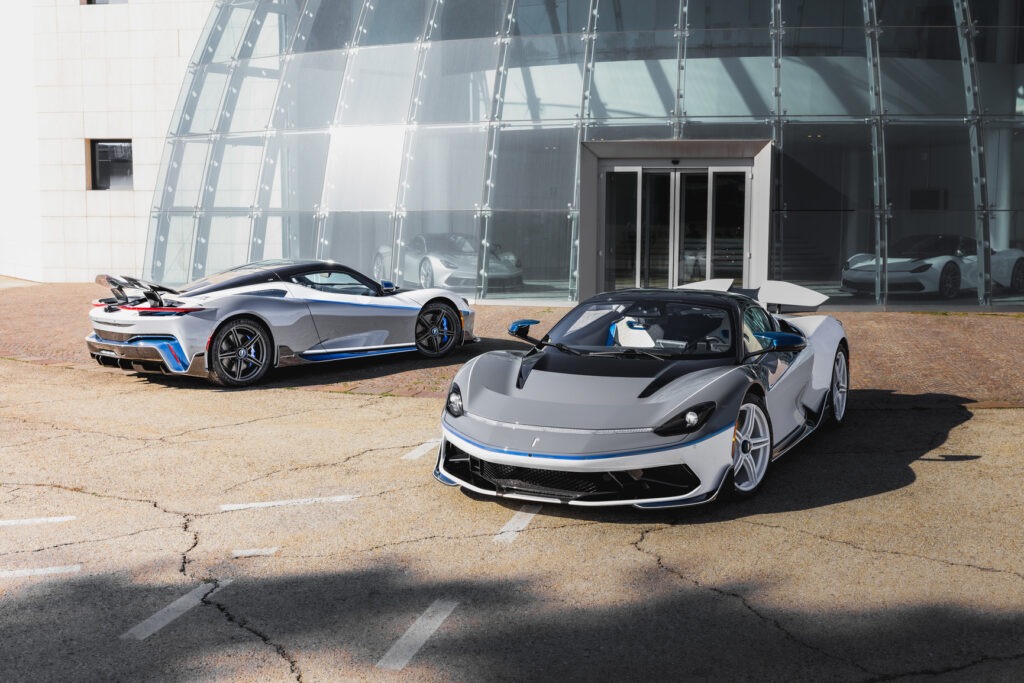
Pininfarina’s lasting success and influence in the automotive world are reflected in the immense demand for its recent creations. The Morgan Midsummer, a collaboration blending timeless elegance with contemporary design, has captivated car enthusiasts worldwide. Its limited edition of 50 units sold out quickly, showcasing the appreciation for Pininfarina’s bespoke craftsmanship and artistic innovation. This achievement reaffirms Pininfarina’s status as a leader in luxury automotive design, demonstrating its skill in merging tradition with forward-thinking ideas. Looking to the future, the company continues to create exceptional vehicles, solidifying its legacy with each project and pushing the boundaries of design and performance.
In 2024, Pininfarina expands its commitment to excellence with the introduction of “Pininfarina Classiche,” a certified classic car program. This initiative further celebrates its rich heritage while guiding its evolution into the future. However, Pininfarina also faces a somber moment with the passing of its president, Paolo Pininfarina, on April 9th, 2024, at the age of 65. Paolo, who joined the family business in 1982 and became president in 2008, was accompanied by his wife Ilaria, their five children, and his mother, Giorgia Gianolio, in his final moments.
Following the path laid by his father, Sergio Pininfarina, Paolo continued the firm’s tradition of excellence. Sergio, who passed away in 2012 at age 85, was responsible for many of the iconic designs, especially for Ferrari, that made the company legendary. As Pininfarina moves forward, it remains dedicated to honoring its remarkable heritage while embracing new possibilities, ensuring its ongoing impact on automotive design and engineering for generations to come.

